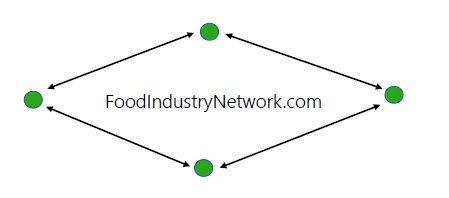EU foodborne illness report shows alarming trends, with fatalities at a decade-high

The latest EU One Health Zoonoses Report reveals a concerning rise in foodborne illness cases, hospitalisations, and fatalities.


Foodborne illnesses are making a worrying comeback in the EU, with listeriosis cases reaching their highest levels since 2007.
According to the latest EU One Health Zoonoses Report, published by the European Food Safety Authority (EFSA) and the European Centre for Disease Control and Prevention (ECDC), the number of foodborne illness outbreaks may have slightly decreased in 2023, but the overall impact—measured in cases, hospitalisations, and fatalities—has intensified.
The report, which examines zoonotic diseases across the EU, reveals a grim reality: fatalities from foodborne illnesses have reached their highest level in a decade. Salmonella emerged as the leading cause, contributing to 1,115 outbreaks that affected 9,210 people, hospitalised 1,726, and claimed 16 lives.
Listeria cases surge
One of the most concerning findings is the steady rise in listeriosis cases between 2019 and 2023. In 2023, 2,952 cases of Listeria monocytogenes infection were reported—an issue that’s becoming more pressing as Europe’s ageing population grows. With over 20 percent of Europeans now aged 65 or over, the risk of severe symptoms from this foodborne illness is climbing.
Ready-to-eat (RTE) foods, such as cold smoked salmon, meat and dairy products, were the most common sources of infection. Testing found that the proportion of samples from RTE food categories that exceeded contamination limits for Listeria monocytogenes ranged from 0.11 percent to 0.78 percent, with fermented sausages topping the list.
A total of 19 foodborne illness outbreaks were associated with Listeria, causing 133 illnesses, 84 hospitalisations and 11 deaths.
Top offending zoonotic diseases
Campylobacteriosis remained the most reported zoonotic disease in the EU, with cases increasing from 139,225 in 2022 to 141,181 in 2023. Poultry and meat products were the primary culprits, linked to 1,174 illnesses and 90 hospitalisations. Despite the annual rise, the long-term trend for Campylobacter infections has stayed relatively stable since 2019.
Salmonella infections surged in 2023, with 77,486 cases recorded—a significant jump from 65,478 the previous year. Eggs, mixed foods, and poultry products were the main sources of outbreaks, with eggs implicated in 83 cases. Alarmingly, fewer EU Member States are meeting Salmonella reduction targets in poultry, dropping from 19 in 2022 to just 15 in 2023.
Infections caused by Shiga toxin-producing Escherichia coli (STEC) accounted for 10,217 human cases in 2023, making it the third most prevalent zoonotic disease. Last year, 66 foodborne illness outbreaks were linked to STEC, with dairy products being among the most common sources.
A call for action
Celine Gossner, Head of ECDC’s Emerging, Food- and Vector-Borne Diseases Section, emphasised the need for renewed focus on prevention: “The rise in severe outcomes from foodborne outbreaks highlights the persistent public health threat posed by Salmonella and other pathogens. By integrating human, animal, and environmental health, we can better prevent these diseases and protect public health,” she said.
The report underscores the ongoing need for rigorous food safety measures and public health strategies to tackle the rising tide of foodborne illnesses across the EU.
Source: newfoodmagazine.com

